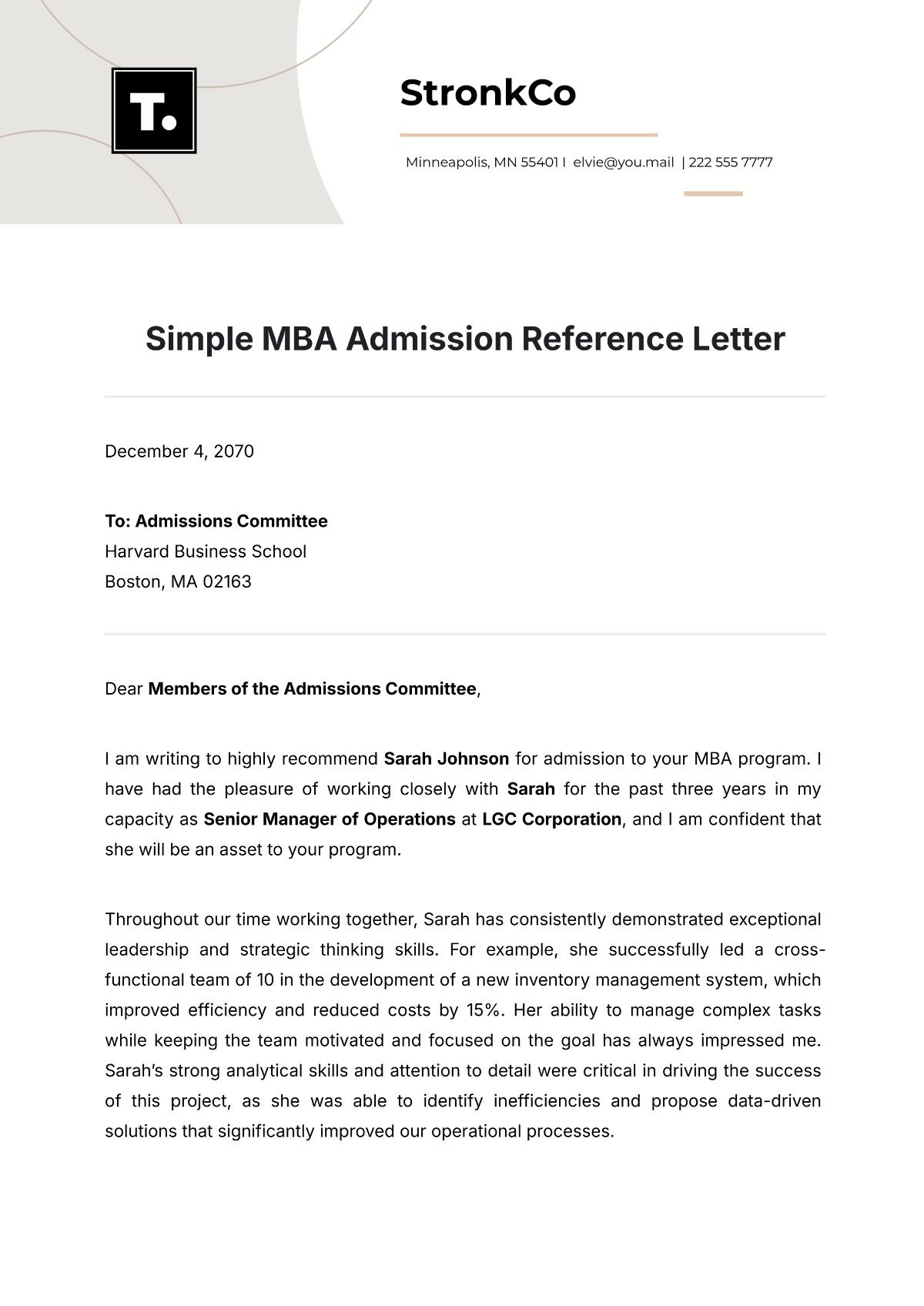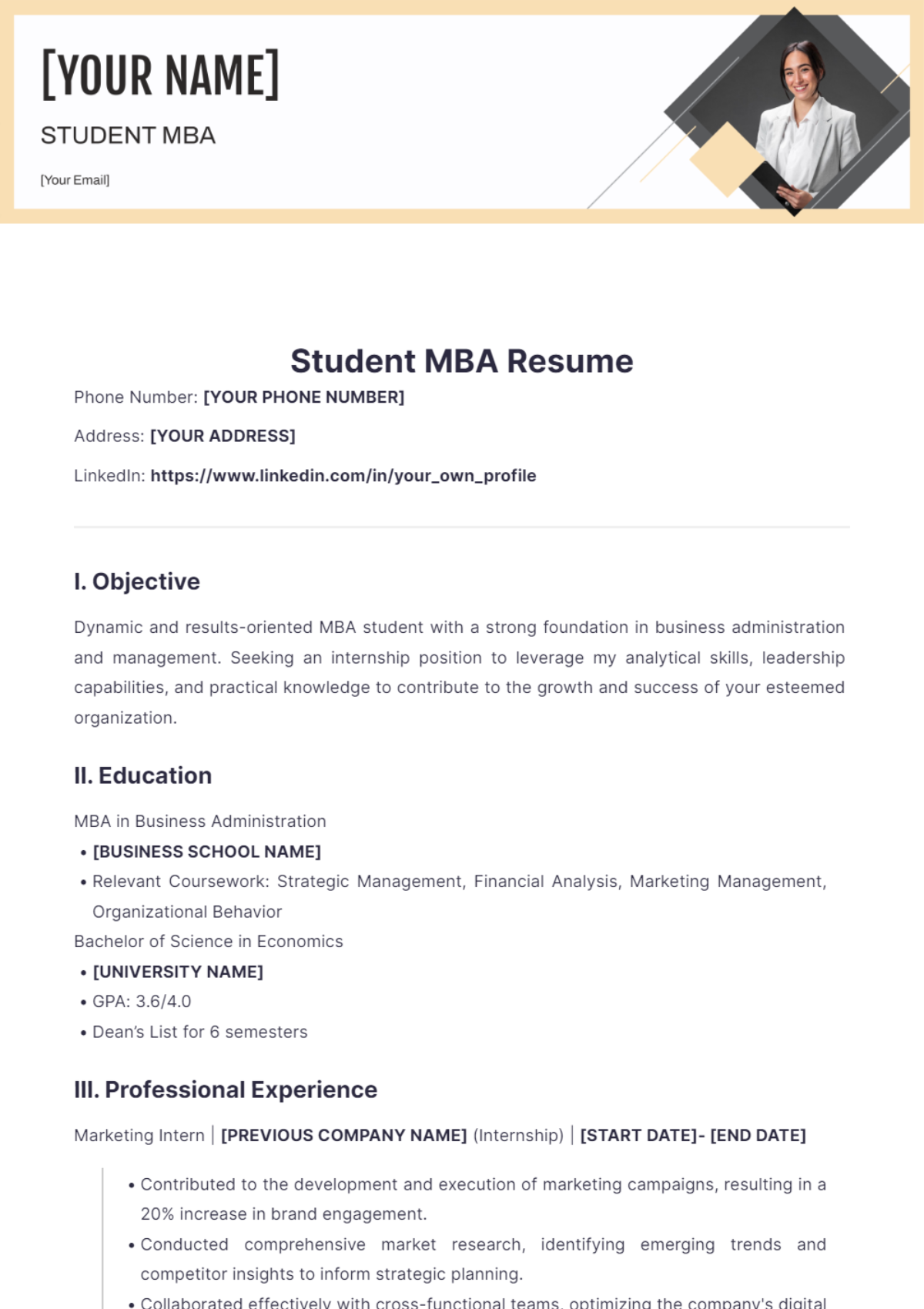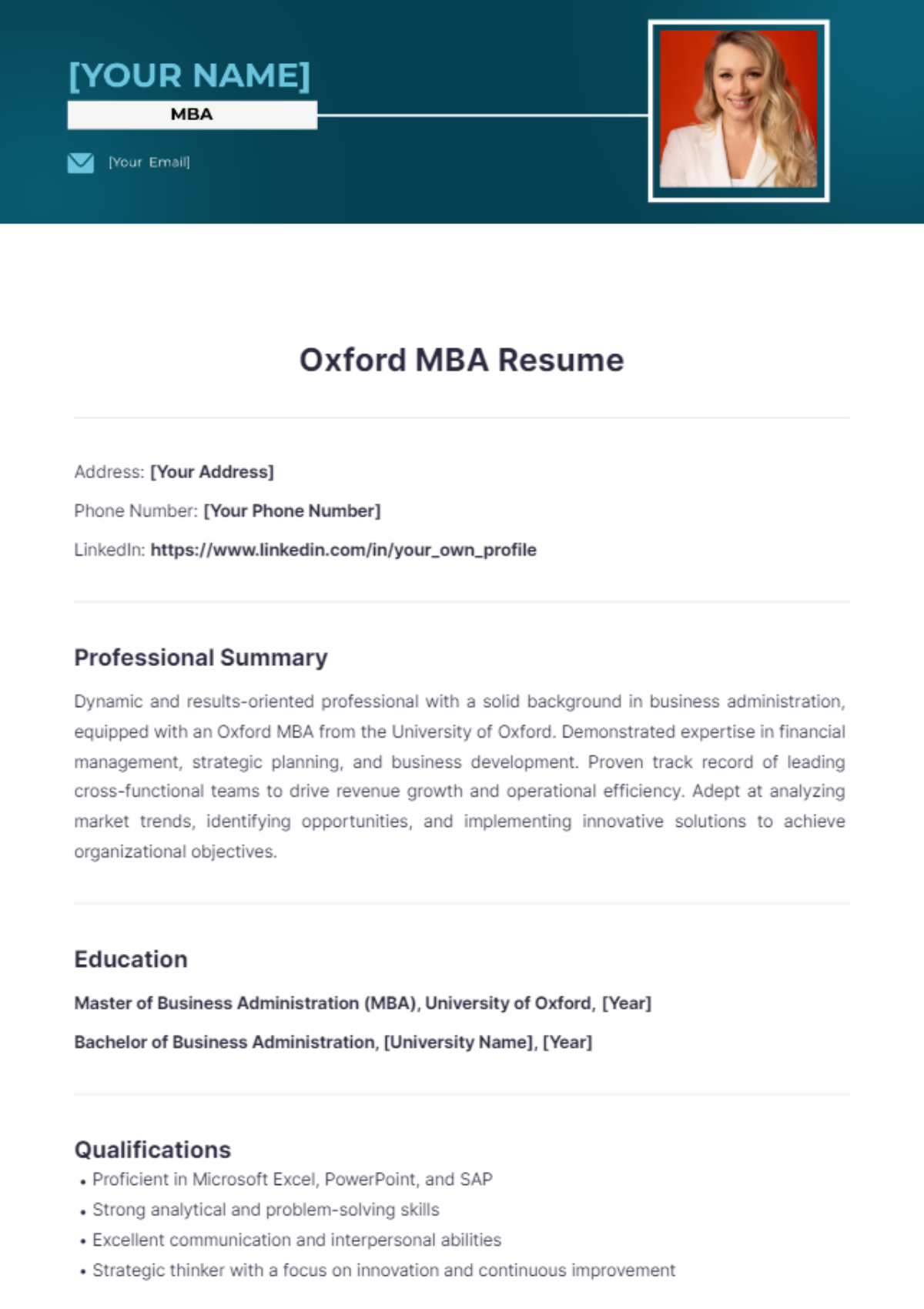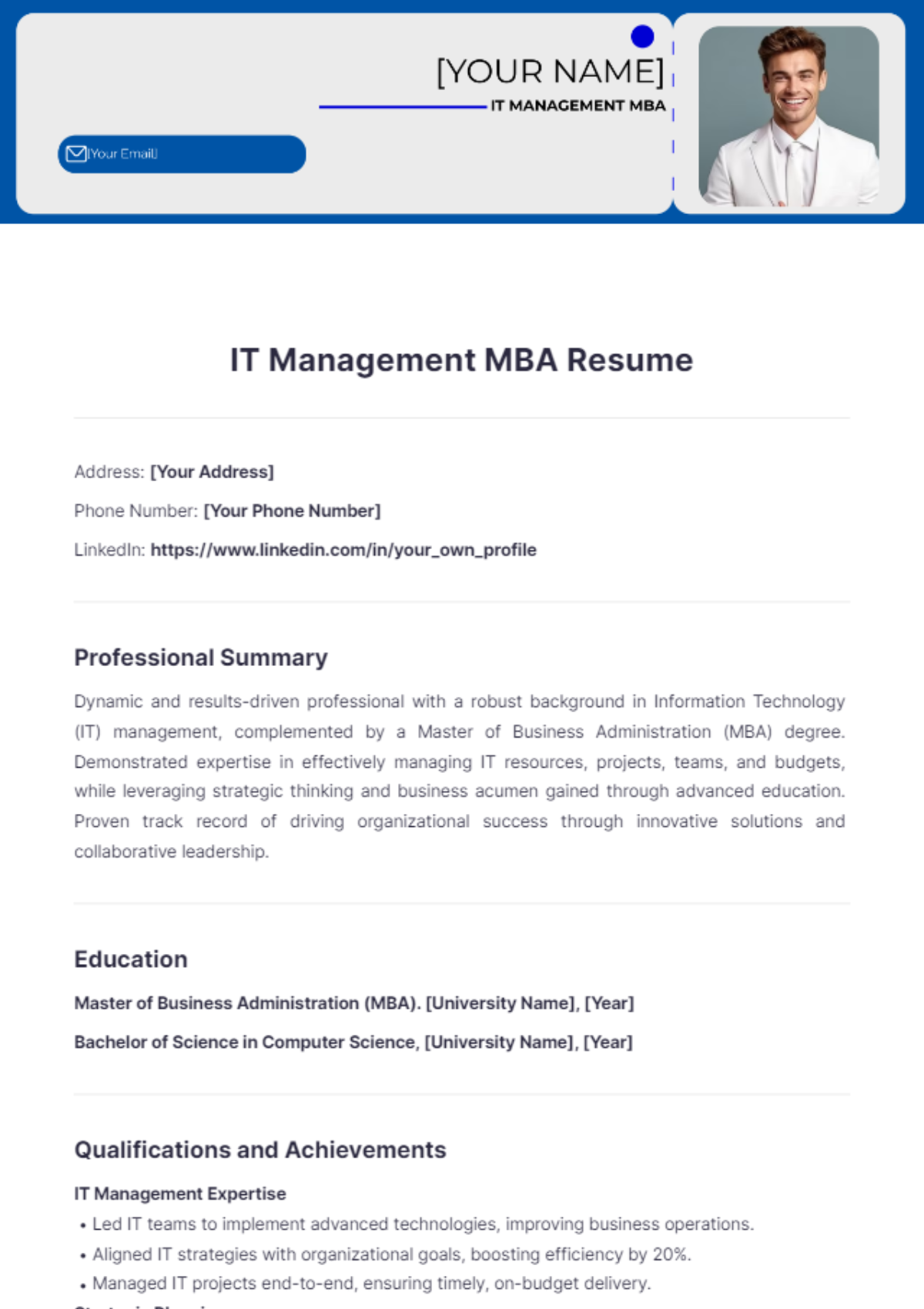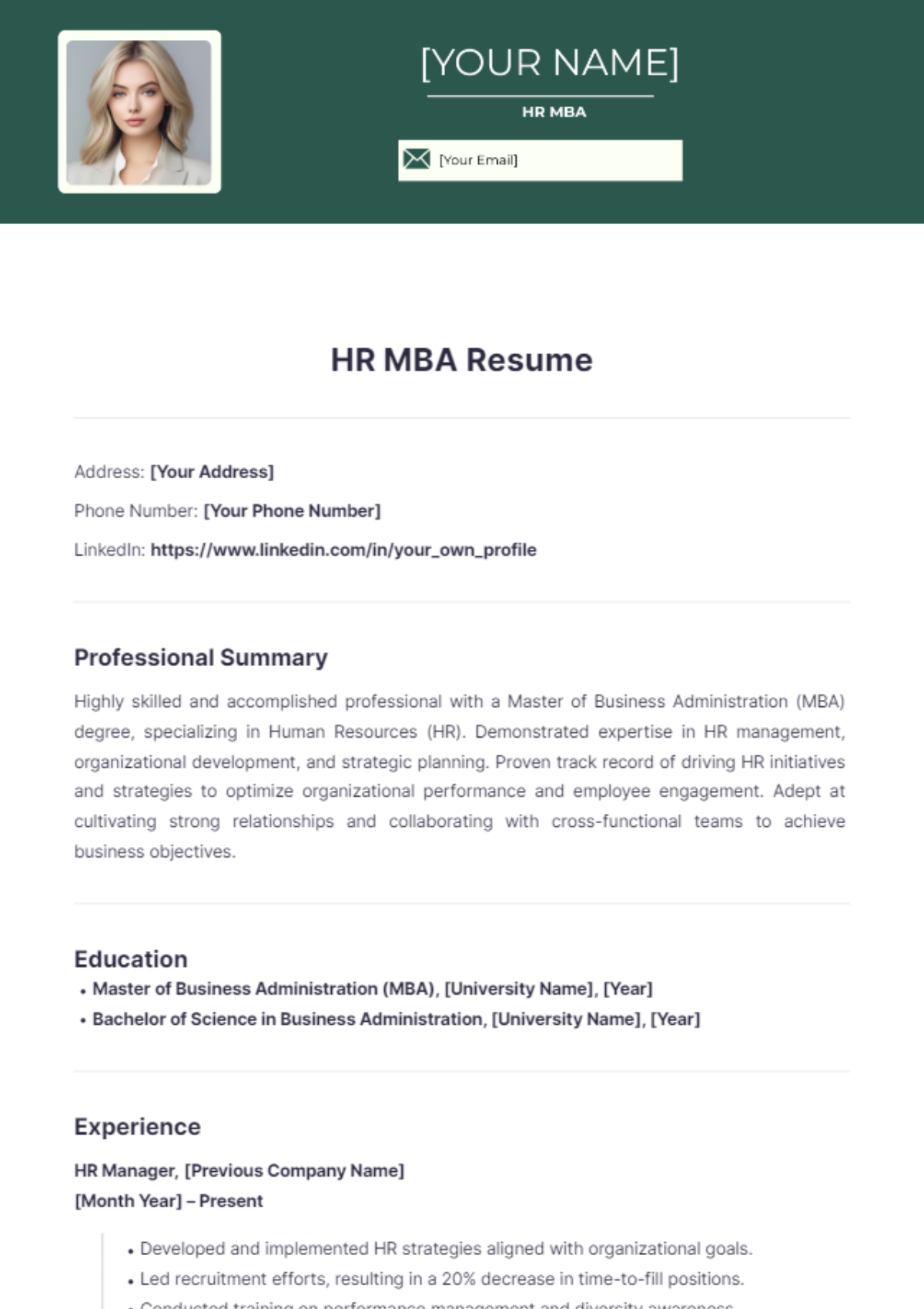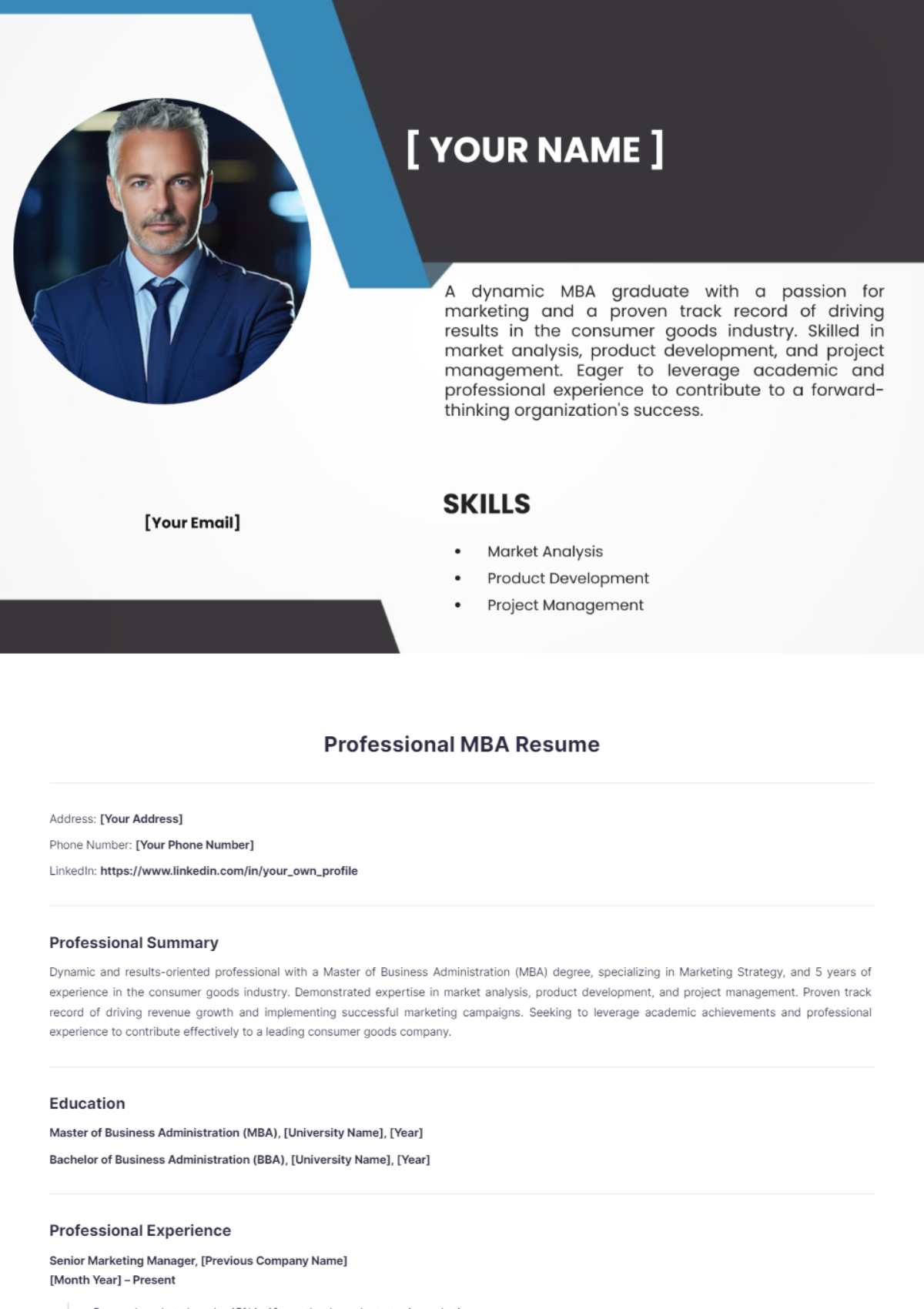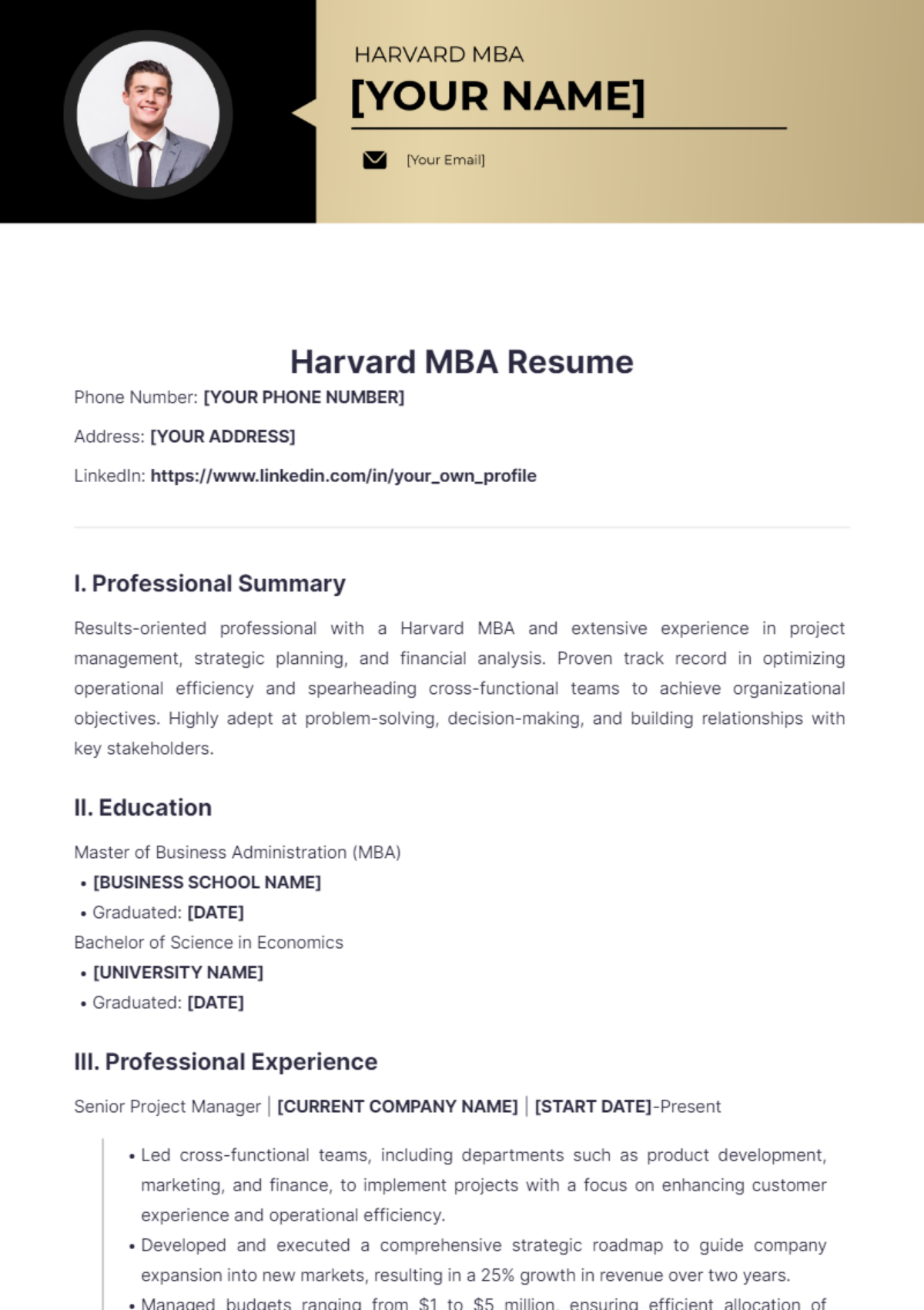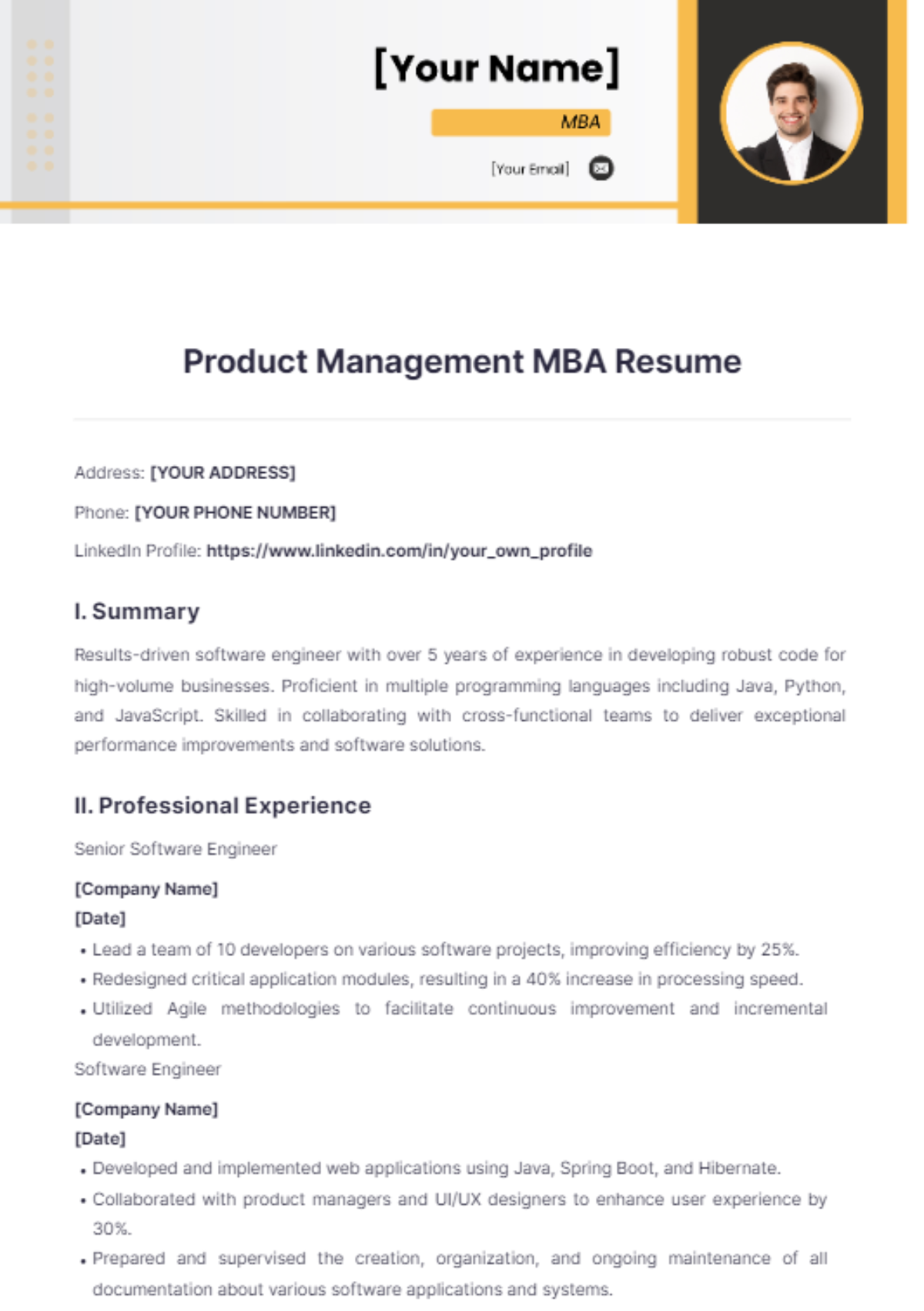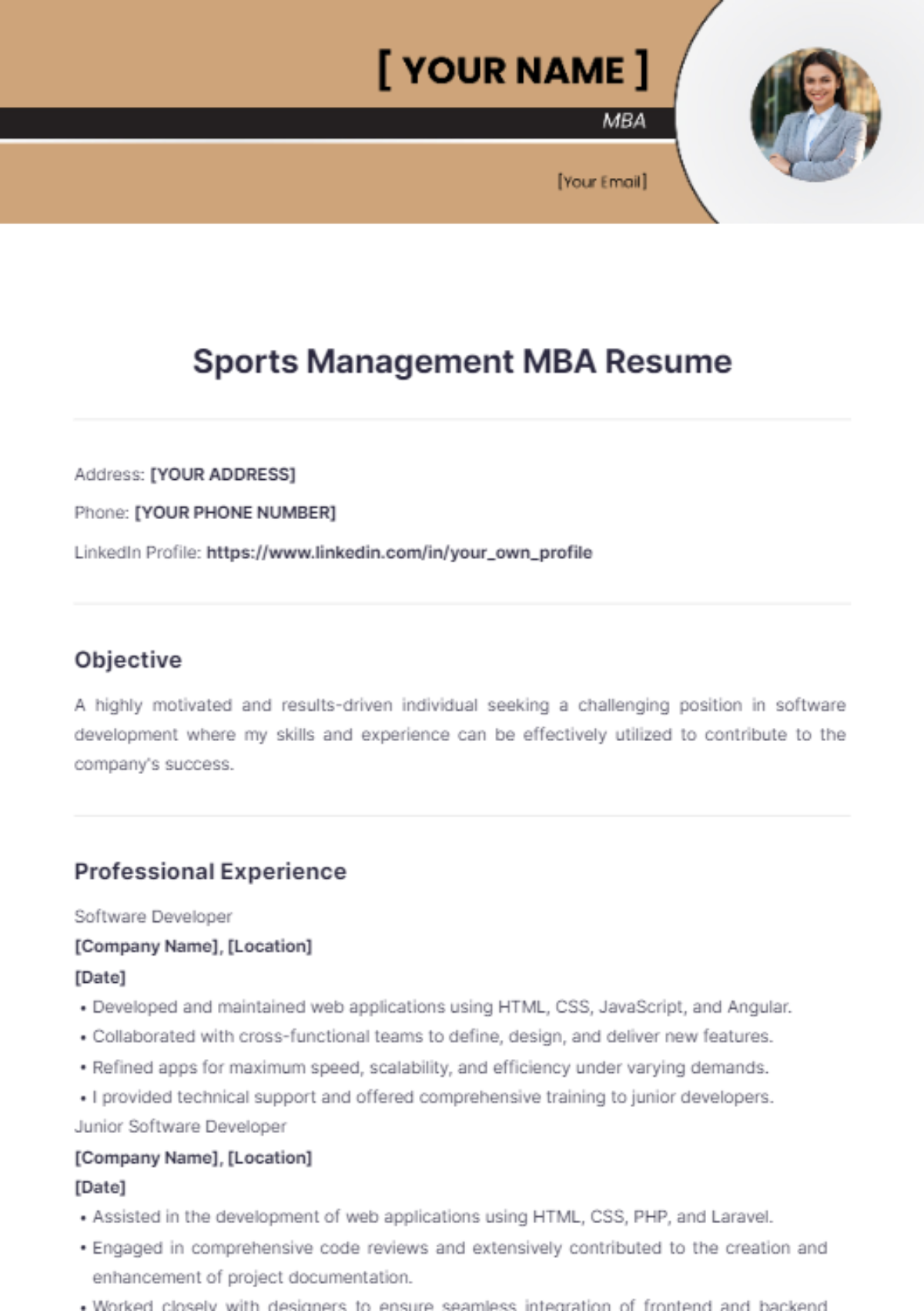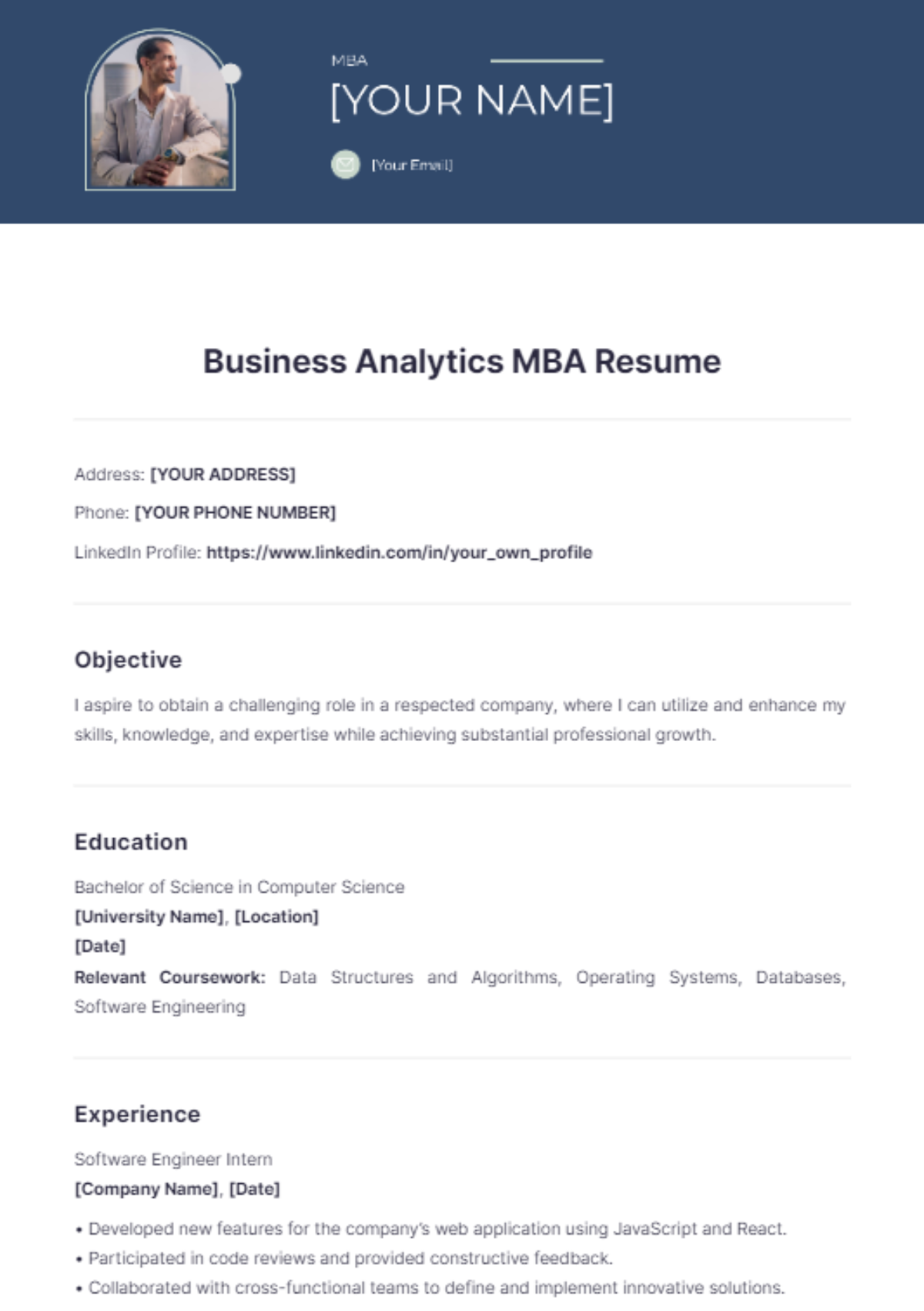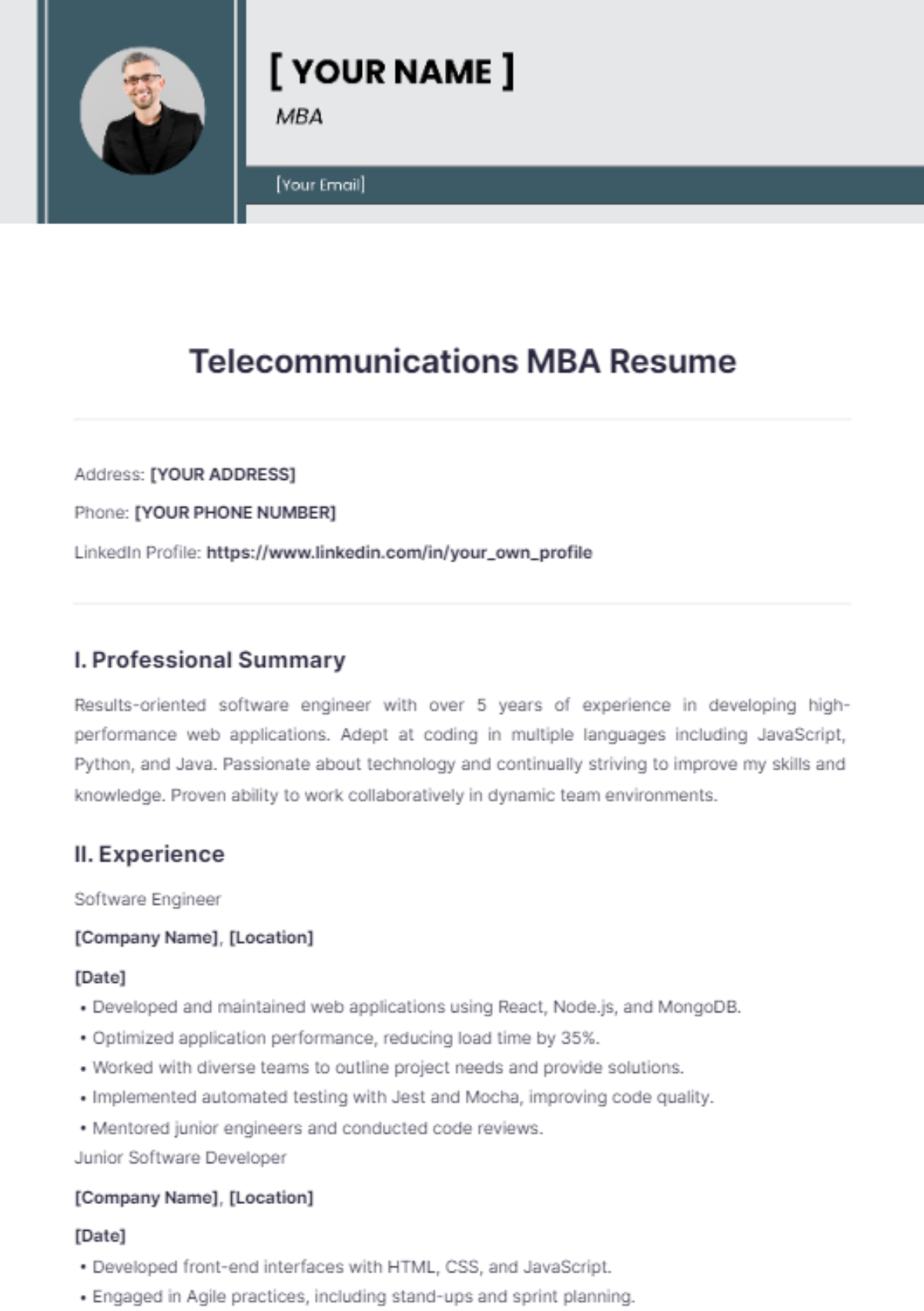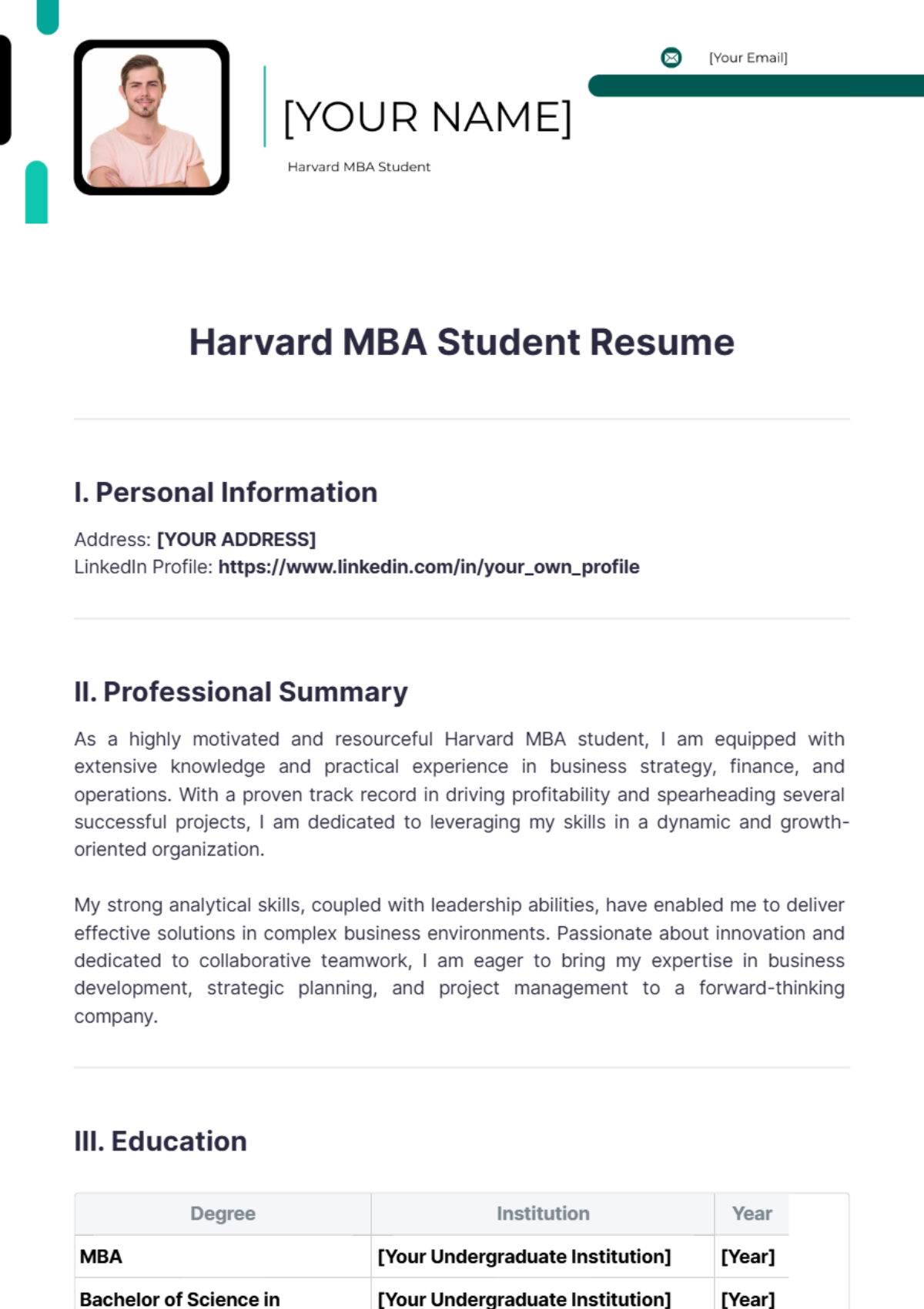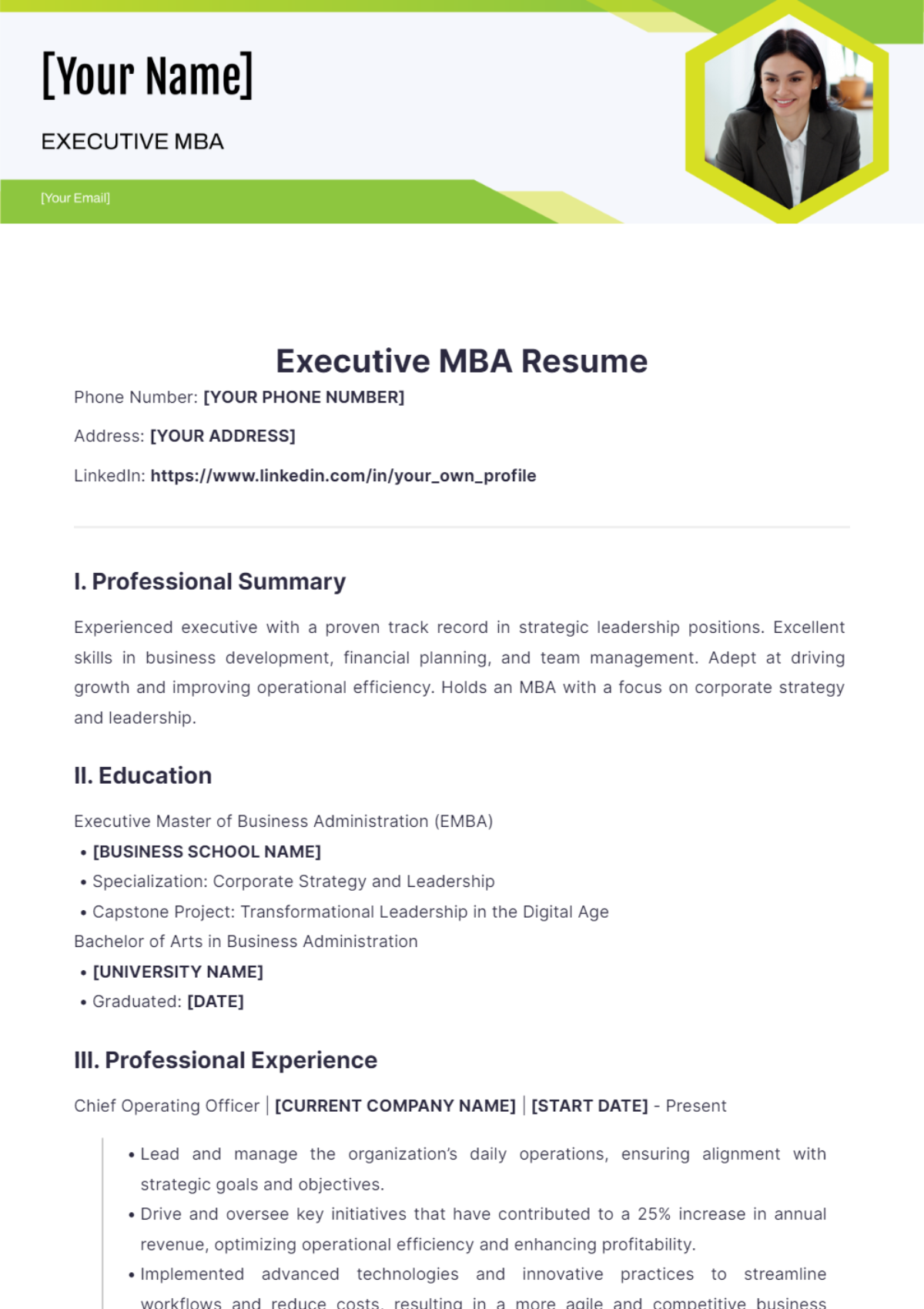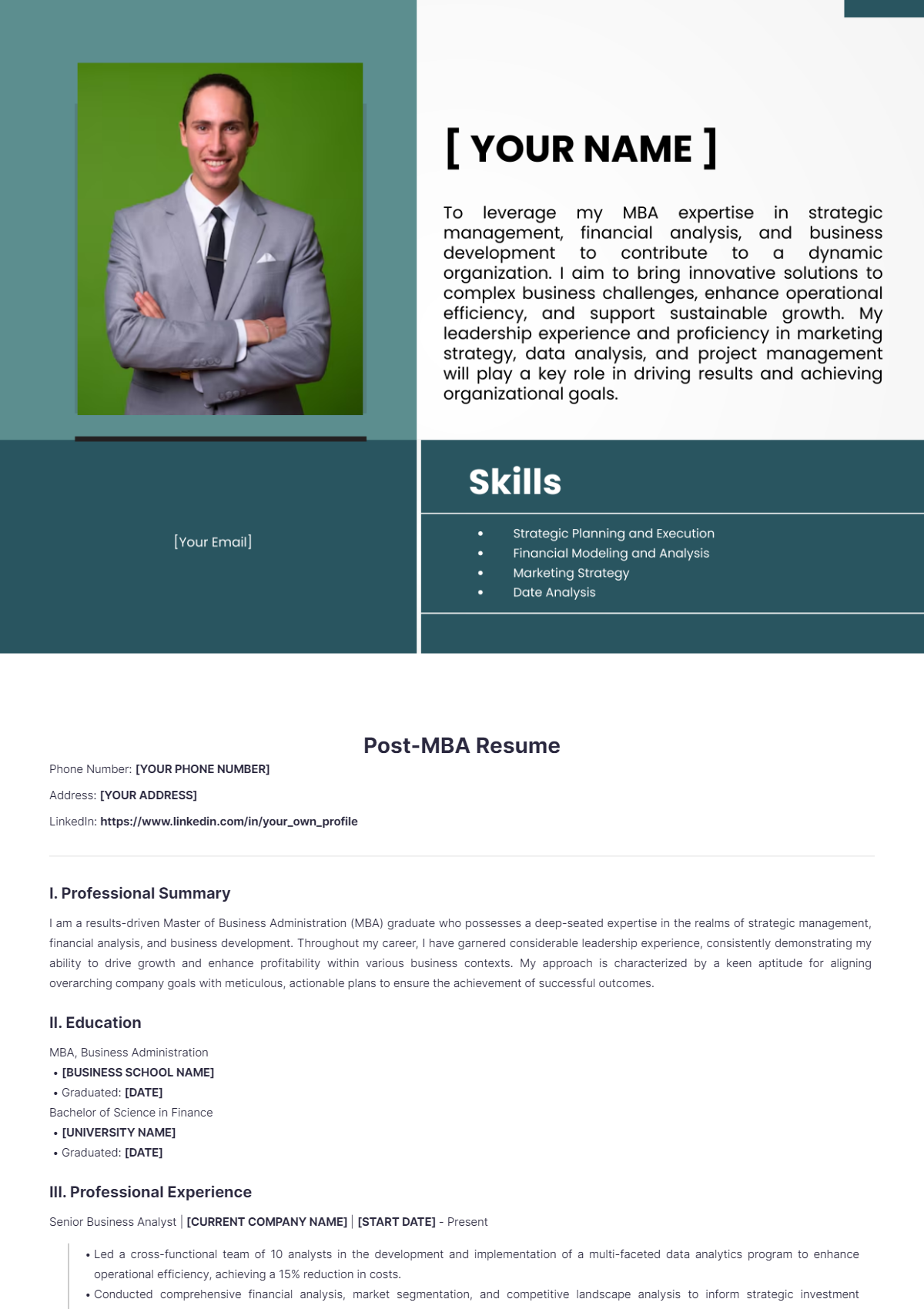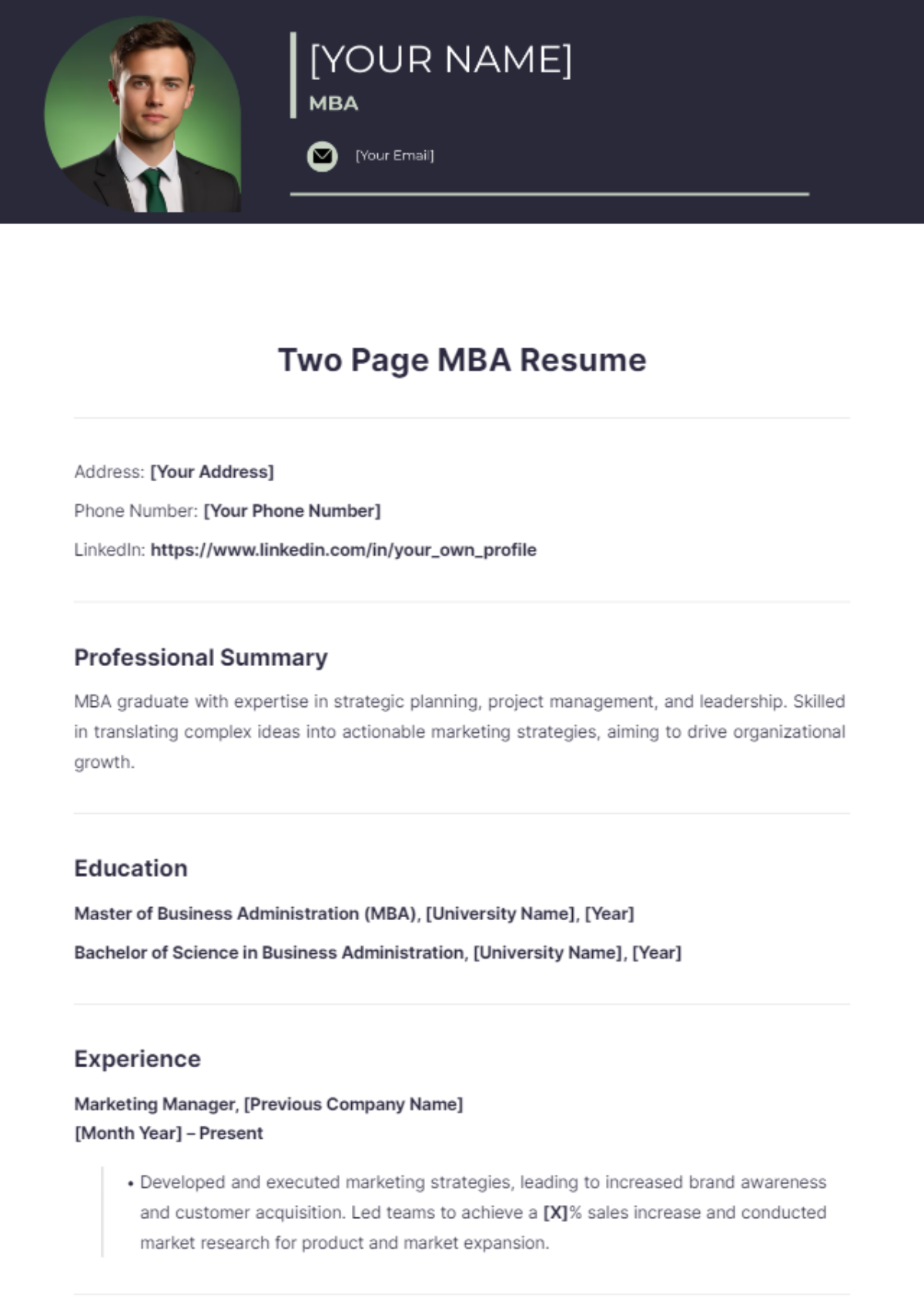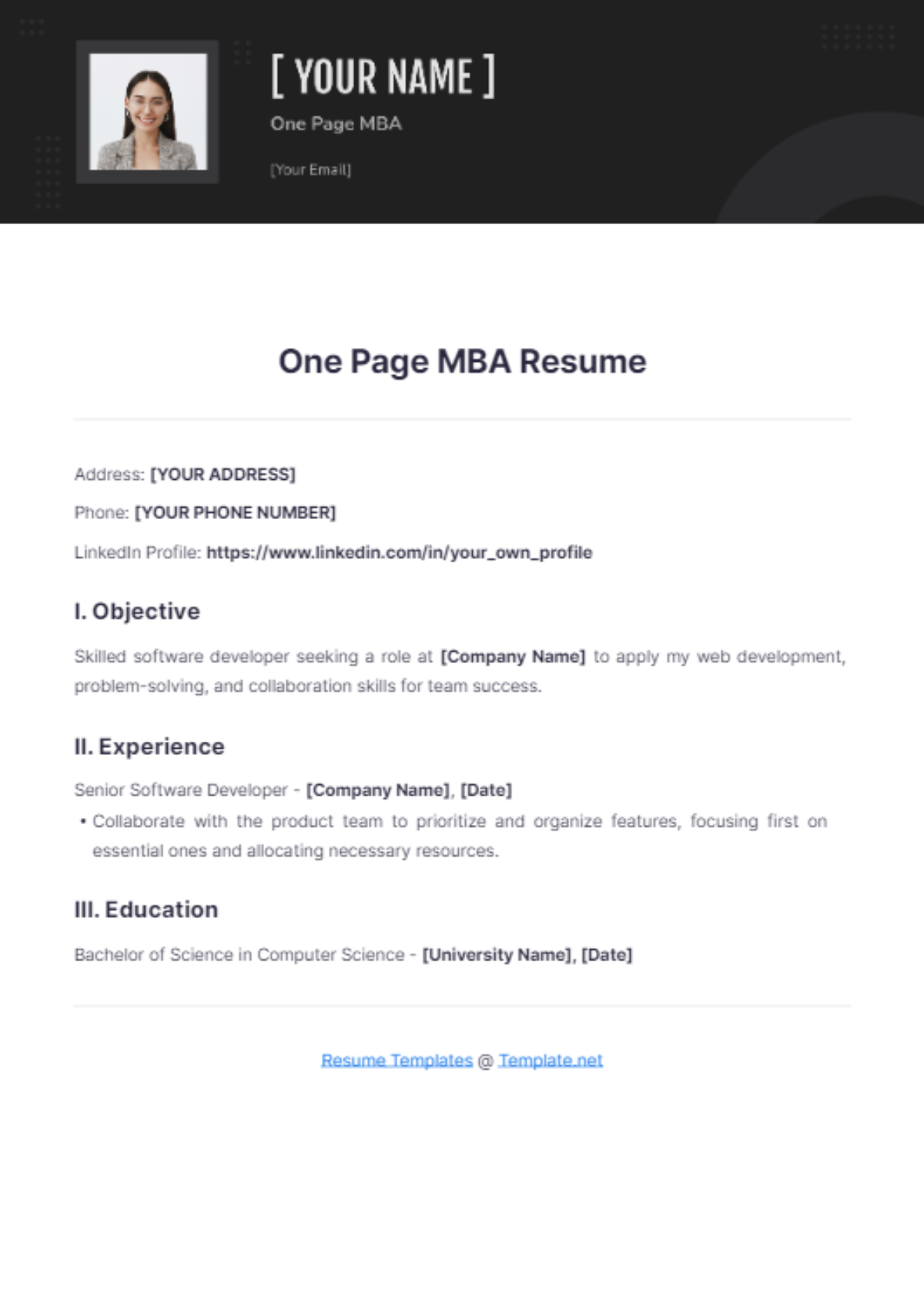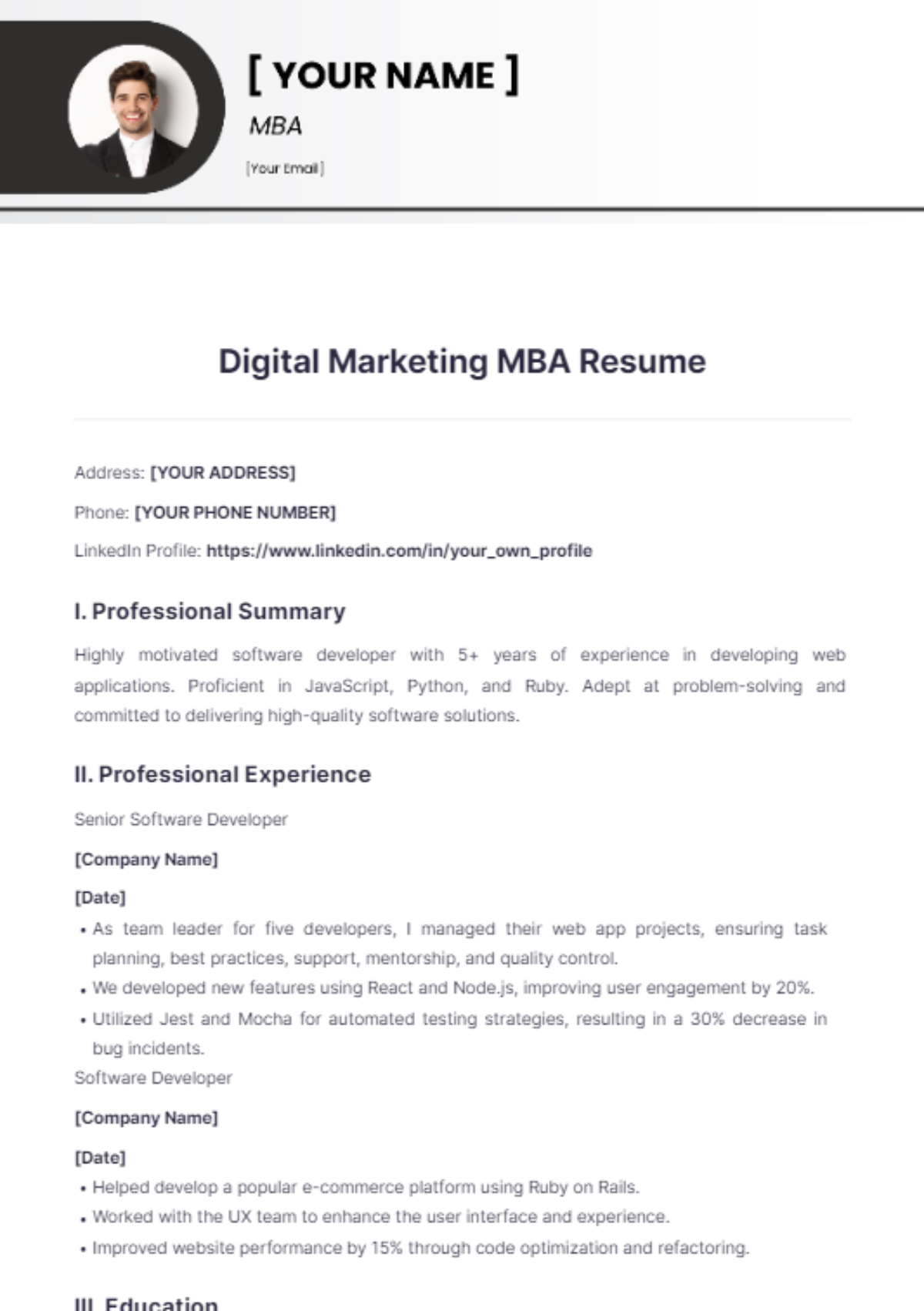MBA Case Study
I. Introduction
A. Background of the Case
[Your Company Name] began as a small startup in [Year], driven by a vision to streamline business operations through technology. Over the past decade, the company has evolved into a major player in the SME software sector, offering innovative solutions tailored to the unique needs of small and medium enterprises. Despite its success, [Your Company Name] now faces critical challenges that threaten its growth trajectory.
B. Importance of the Case Study
This case study is essential for understanding the complexities of strategic decision-making within a rapidly evolving industry. It provides valuable insights into the challenges of scaling operations and innovating in a competitive landscape. The findings will also help students apply theoretical concepts to real-world scenarios.
C. Objectives of the Case Study
The primary objective is to conduct a comprehensive analysis of [Your Company Name]'s market position and identify key challenges impacting its growth. Additionally, the study aims to explore potential strategies that could enhance [Your Company Name]'s competitive advantage and operational efficiency. Finally, it seeks to provide actionable recommendations that align with [Your Company Name]'s long-term vision.
D. Overview of the Structure
The case study will begin with an overview of [Your Company Name], including its history and market position. It will then delve into the industry context, followed by a problem statement outlining the key challenges. An in-depth analysis will utilize various frameworks, leading to proposed solutions and a conclusion summarizing key findings and future recommendations.
II. Company Overview
A. Company History
[Your Company Name] was founded by a group of software engineers who identified a gap in the market for affordable CRM solutions for SMEs. Initially focused on the U.S. market, [Your Company Name] expanded its offerings to include project management tools and collaboration platforms. This diversification allowed the company to capture a broader customer base and solidify its market position.
B. Mission and Vision
[Your Company Name]'s mission is to empower businesses by providing user-friendly technology solutions that enhance operational efficiency. The company's vision is to become a global leader in the SME software market, recognized for innovation and customer satisfaction. This mission and vision guide [Your Company Name]'s strategic decisions and product development initiatives.
C. Key Products/Services
[Your Company Name]'s primary products include its flagship CRM software, a project management tool, and a cloud-based collaboration platform. Each product is designed to be highly customizable, allowing businesses to tailor solutions to their specific needs. The company also offers training and support services to ensure customer success and satisfaction.
D. Market Position
[Your Company Name] is ranked among the top five providers of software solutions for SMEs in the United States, boasting a significant market share. The company's strong reputation for quality and customer service has fostered brand loyalty among its clients. Additionally, [Your Company Name]'s commitment to continuous improvement and innovation keeps it competitive in a fast-paced industry.
E. Financial Performance
In the last fiscal year, [Your Company Name] reported revenues of $25 million, reflecting a robust 20% year-over-year growth. The company's profit margin stands at 15%, driven by efficient operations and a focus on customer retention. However, increasing customer acquisition costs have prompted a reevaluation of marketing strategies to sustain growth.
III. Industry Context
A. Industry Overview
Size and Growth Trends
The global software industry is currently valued at over $500 billion and is expected to grow at a CAGR of 8% over the next five years, driven by increased digital transformation initiatives. Companies are increasingly investing in technology to improve operational efficiency and customer experience. This growth presents both opportunities and challenges for firms like [Your Company Name].
Key Players
Major competitors in the SME software sector include Salesforce, Microsoft, and Oracle, all of which have established strong market presences and extensive product offerings. These companies are known for their robust marketing strategies and significant investment in research and development. [Your Company Name] faces the challenge of differentiating itself in this crowded market while maintaining quality and affordability.
Regulatory Environment
The software industry is heavily influenced by data privacy regulations, including the General Data Protection Regulation (GDPR) in Europe and the California Consumer Privacy Act (CCPA) in the U.S. Compliance with these regulations is essential for software companies to avoid legal penalties and maintain customer trust. As regulations evolve, [Your Company Name] must ensure its products meet all legal requirements.
B. Market Analysis
Target Market Segmentation
[Your Company Name] primarily targets small to medium-sized enterprises (SMEs) across various sectors, including retail, healthcare, and finance. The company's ideal customers are businesses looking for cost-effective software solutions that require minimal IT support. This focus on SMEs allows [Your Company Name] to tailor its offerings to meet the unique needs of this segment.
Customer Behavior
Research indicates that SMEs prioritize software solutions based on ease of use, integration capabilities, and cost-effectiveness. Customers also seek vendors that provide strong customer support and ongoing training. Understanding these preferences is crucial for [Your Company Name] to enhance customer satisfaction and loyalty.
Competitive Landscape
The competitive landscape is marked by rapid technological advancements and frequent new product launches. [Your Company Name] competes not only with established players but also with emerging startups offering innovative solutions at competitive prices. To remain relevant, [Your Company Name] must continually assess its competitors and adapt its strategies accordingly.
IV. Problem Statement
A. Identification of Key Issues
[Your Company Name] is currently facing significant challenges in scaling its operations to meet growing demand while also maintaining its commitment to innovation. The company’s existing product line is becoming increasingly outdated in the face of competitors' new offerings, threatening its market position. Furthermore, high customer acquisition costs are affecting profitability, necessitating a strategic overhaul.
B. Implications of the Problem
If these challenges are not addressed promptly, [Your Company Name] risks losing its competitive advantage and market share to more agile competitors. Additionally, the inability to innovate could result in decreased customer satisfaction and retention, further exacerbating revenue challenges. The implications extend beyond financial metrics, potentially affecting the company's brand reputation and future growth opportunities.
C. Relevance to Business Strategy
The problems [Your Company Name] faces are directly tied to its strategic goal of becoming a market leader in the SME software sector. Addressing these issues is essential for achieving sustainable growth and long-term success. A well-defined strategy that focuses on innovation, operational efficiency, and customer engagement will be crucial in overcoming these hurdles.
V. Analysis
A. Methodology
Data Sources
Data for this analysis was gathered from a variety of sources, including internal financial reports, customer feedback surveys, and industry publications. This multi-faceted approach provides a comprehensive view of [Your Company Name]’s current position and challenges. The combination of qualitative and quantitative data enhances the reliability of the analysis.
Analytical Frameworks Used
The analysis utilized SWOT and PESTEL frameworks to assess [Your Company Name]’s internal strengths and weaknesses as well as external opportunities and threats. These frameworks facilitate a structured examination of the company's strategic environment. By integrating insights from both frameworks, a clearer picture of [Your Company Name]'s operational landscape emerges.
B. SWOT Analysis
Strengths |
|
Weaknesses |
|
Opportunities |
|
Threats |
|
C. PESTEL Analysis
Political Factors
Changes in government regulations, particularly regarding data protection, may increase operational costs for [Your Company Name]. Political instability in international markets can also pose risks for expansion efforts. [Your Company Name] must navigate these challenges carefully to mitigate potential impacts.
Economic Factors
Economic downturns may lead to reduced IT spending among SMEs, impacting [Your Company Name]’s revenue. Conversely, periods of economic growth could enhance demand for software solutions. Understanding economic indicators will be crucial for forecasting sales and adjusting marketing strategies accordingly.
Social Factors
There is a growing reliance on technology for business operations, particularly following the COVID-19 pandemic. Customers now expect software solutions to facilitate remote work and collaboration. [Your Company Name] must adapt its offerings to meet these evolving social needs.
Technological Factors
Rapid advancements in technology necessitate continuous innovation in product development. [Your Company Name] must stay ahead of emerging trends, such as artificial intelligence and machine learning, to maintain its competitive edge. Investing in R&D is essential for driving innovation.
Environmental Factors
Increasing focus on sustainability requires software companies to adopt environmentally friendly practices. [Your Company Name] can leverage this trend by incorporating green initiatives into its product development and operations. Demonstrating commitment to sustainability can enhance [Your Company Name]’s brand image.
Legal Factors
Compliance with data protection regulations is crucial for maintaining customer trust and avoiding legal issues. [Your Company Name] must stay informed about changes in relevant laws and ensure its products adhere to these regulations. Legal challenges could pose significant risks to the company if not addressed properly.
D. Financial Analysis
Key Financial Ratios
[Your Company Name]’s current ratio of 1.5 indicates strong short-term financial health, suggesting the company can meet its short-term obligations. The quick ratio is also healthy at 1.2, highlighting effective cash management. However, monitoring these ratios is essential for maintaining financial stability.
Revenue Trends
Despite a strong overall revenue growth of 20%, [Your Company Name] is facing challenges with increasing customer acquisition costs, which have risen by 25%. This trend necessitates a reevaluation of marketing strategies to enhance cost-effectiveness. Analyzing revenue by product line will also provide insights into performance.
Cost Structure
[Your Company Name]'s cost structure is heavily influenced by R&D expenses, which account for 25% of total costs. While investing in innovation is critical, [Your Company Name] must also identify areas for cost reduction without compromising product quality. A thorough analysis of operational expenses is essential for improving profitability.
VI. Solutions/Recommendations
A. Proposed Solutions
Short-term Strategies
To address immediate challenges, [Your Company Name] should enhance its marketing efforts to target untapped customer segments, leveraging digital marketing strategies to reach potential clients more effectively. Additionally, implementing a referral program could incentivize existing customers to recommend [Your Company Name]’s solutions, potentially increasing the customer base with lower acquisition costs. These initiatives should focus on maximizing customer engagement and retention, ensuring that [Your Company Name] maintains its current clientele while attracting new users.
Long-term Strategies
For sustained growth, [Your Company Name] should consider expanding its product offerings by investing in the development of new software solutions tailored to specific industries, such as healthcare or finance. Exploring international markets presents an opportunity for significant revenue growth; therefore, [Your Company Name] should conduct market research to identify regions with high demand for SME software solutions. Collaborating with local partners could facilitate market entry and ensure compliance with regional regulations.
B. Justification for Recommendations
The proposed short-term strategies are designed to generate quick wins and stabilize [Your Company Name]’s customer base, which is crucial for the company’s immediate financial health. Long-term strategies focus on innovation and market expansion, ensuring that [Your Company Name] remains competitive in the rapidly evolving software landscape. By aligning these strategies with [Your Company Name]'s mission and vision, the company can achieve sustainable growth and strengthen its market position.
C. Implementation Plan
Timeline
The short-term marketing initiatives should begin within the next quarter, aiming for a three-month period to measure initial effectiveness. Long-term strategies, such as product development and international market expansion, should span over the next 18 to 24 months to allow adequate time for research, development, and market entry. A phased approach will ensure that [Your Company Name] can adapt its strategies based on ongoing feedback and market conditions.
Required Resources
Implementing these strategies will require increased funding for marketing initiatives and product development, estimated at $1 million for the next fiscal year. [Your Company Name] should also consider hiring additional personnel in marketing and product development to enhance capacity and expertise. Allocating resources wisely will be critical to ensure the success of these initiatives.
Key Performance Indicators
To track the success of the recommended strategies, [Your Company Name] should monitor several key performance indicators, including customer acquisition rates, market share growth, and revenue per customer. Additionally, customer satisfaction scores and product usage metrics can provide insights into the effectiveness of new offerings and marketing campaigns. Regularly reviewing these KPIs will allow [Your Company Name] to adjust its strategies as necessary.
VII. Conclusion
A. Summary of Key Findings
The analysis revealed that Tech Innovators Inc. possesses significant strengths, such as a strong brand reputation and dedicated customer support, but also faces critical challenges related to market competition and innovation. The company’s financial health is sound, yet rising customer acquisition costs and limited product offerings necessitate urgent attention. The proposed strategies aim to enhance [Your Company Name]’s market position by addressing these challenges while leveraging existing strengths.
B. Impact of Recommendations
Implementing the recommended short-term and long-term strategies is expected to stabilize [Your Company Name]’s customer base and enhance its product offerings, ultimately driving revenue growth. By expanding into new markets and developing tailored solutions, [Your Company Name] can better meet customer needs and reduce dependence on its current offerings. These changes will not only improve financial performance but also reinforce [Your Company Name]'s commitment to its mission of empowering businesses through technology.
C. Future Outlook for the Company
With the right strategies in place, [Your Company Name] is well-positioned to capitalize on emerging trends in the software industry, particularly the increasing demand for customized solutions among SMEs. The company's commitment to innovation and customer satisfaction will be pivotal in navigating future challenges and maintaining a competitive edge. By fostering a culture of continuous improvement, [Your Company Name] can enhance its prospects for long-term success and establish itself as a leader in the global SME software market.
